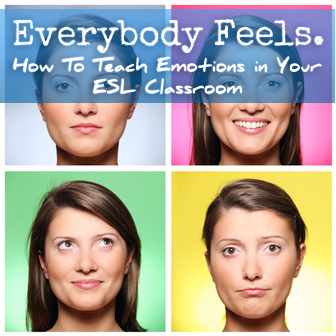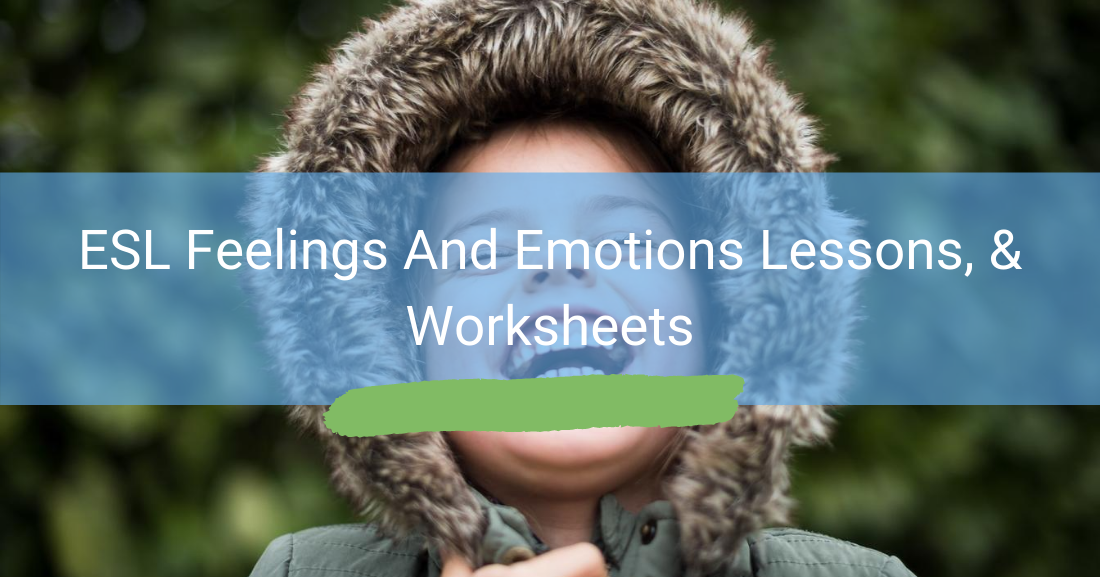How Do You Feel Today? Teaching Emotions in Your ESL Classroom


Having the ability to express one’s feelings and emotions is vital in learning a new language. Expressing emotions is not always the easiest thing to do, and it can be even more challenging to do so in a foreign language. Expanding your students’ vocabulary around feelings and emotions is essential, especially at an early stage.
In the article, we have rounded up various lessons, worksheets, and flashcards that help your students improve their vocabulary relating to feelings and emotions. While most of these lessons are geared toward students at the elementary level, we also cover lessons for the pre-intermediate and intermediate learners. Let’s dive in.

Feelings and Emotions: Beginner Word Search - Word search are a fun way to introduce new words to your young learners’ vocabulary. The list of words used in this word search: COLD, HAPPY, TIRED, ANGRY, HOT, WORRIED, THIRSTY, MAD, HUNGRY, SAD, BORED. The worksheet also comes with the solution for the crossword puzzle.
Feelings and Emotions Vocabulary with Emojis - This worksheet features two activities on feelings and emotions. Students must draw how they feel and fill in the blank part of the sentence in the first activity. In the second activity, they cut and paste the different emojis in the correct column. This worksheet is recommended for teenagers at the elementary level.
Feelings- Board Game - This fun board game is an excellent way to help build your student vocabulary around feeling and emotions. The rules are simple. Students must roll a dice to get a feeling or emotion. Once they have landed on that feeling, they must say “I am [feeling student landed on}”.. Example, “I am tired” or “I am scared.” You can also change things up by having them say, “He or She is…”, “They are,” etc.
Feelings and Emotions Classroom Poster - This picture dictionary features twelve emotions and uses visual aids to help younger learners grow the emotion-related vocabulary. This could be printed and used as a classroom poster or handed out to your students as a study guide.
Feelings and Emotions Primary Worksheet - This worksheet includes a reading and comprehension exercise for younger learners aged 7 to 10. It features a cartoon character named Mike, who expresses his feelings. The worksheet also allows students to express their feelings in both oral and written forms.
Feelings and Emotions PowerPoint Presentation - This picture dictionary helps younger learners expand their emotions related vocabulary. It includes words such as; Happy, Sad, Angry, Scared, Loved, and more. It is recommended for elementary students.
Feelings - This worksheet allows young learners to build their vocabulary relating to feelings and emotions while improving their writing abilities. The worksheet comes with an accompanying video. It is recommended that you allow your students to watch the video before giving the worksheet.
Feelings: Mini Book - This 8-page min book includes pictures to help younger students build their emotion-related vocabulary. The mini-book also comes in a black and white version. This Worksheet is intended for younger learners.
Feelings - This 17 slide PowerPoint helps younger students learn feelings-related vocabulary items, such as angry, impatient, sad, upset, excited, happy. This worksheet is suitable for students at the elementary level.
How Are You? Emotions - Blank Face Templates - This drawing exercise is perfect for young learners at the elementary level. Students must draw faces to describe sad, happy, angry, afraid, surprised. This worksheet also presents an opportunity to review facial vocabulary such as eyes, nose, mouth, hair.
Feelings Dominoes - This fun game comes with an educational twist. The game features 12 adjectives: angry, confused, depressed, excited, furious, happy, hurt, nervous, sad, scared, tired, shy.
How to set up the game:
Rules of the Game:
Poem- Days of the Week through Emotions - Geared towards younger learners, this worksheet teaches students emotion-related vocabulary and the days of the week. The students must listen to a poem about a Doodle that has a different emotion every day of the week, then match the day of the week with a particular feeling expressed on Doodle's face.

Feelings and Emotions PowerPoint - This ten slide animated PowerPoint is an excellent tool for teaching or revising feelings and emotions related vocabulary with your students. The worksheet also includes a multiple-choice activity.
Feelings and Emotions - This worksheet features seven animated cartoon characters, each depicting a different facial expression. The goal is for the student to write down how they think the character feels. In the second activity, students must write possible emotions to each situation.
Emotions Map - This worksheet comprises of twenty-four pictures depicting various emotions. Students must write down and discuss what they think each image is illustrating.
For a list of activities that you can practice with your class visit
How Do You Feel Today? Teaching Emotions in Your ESL Classroom